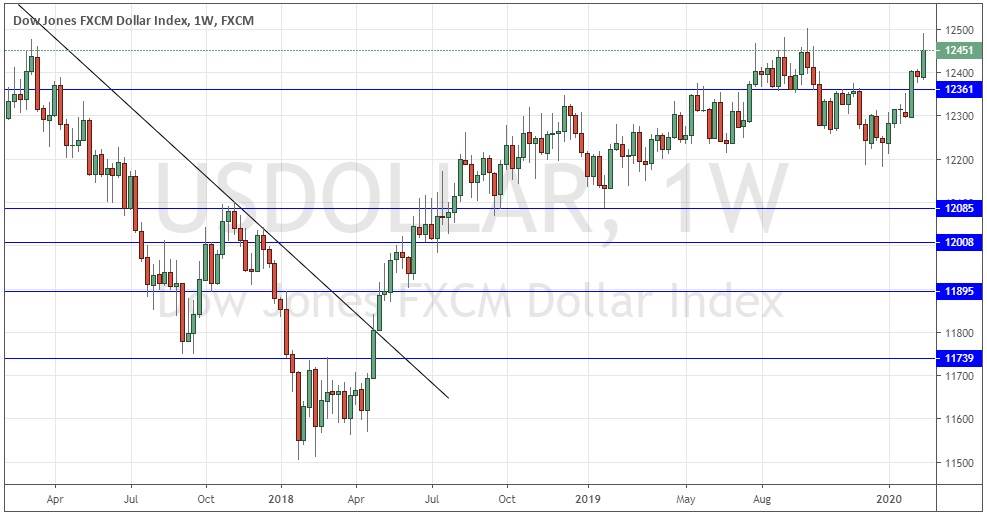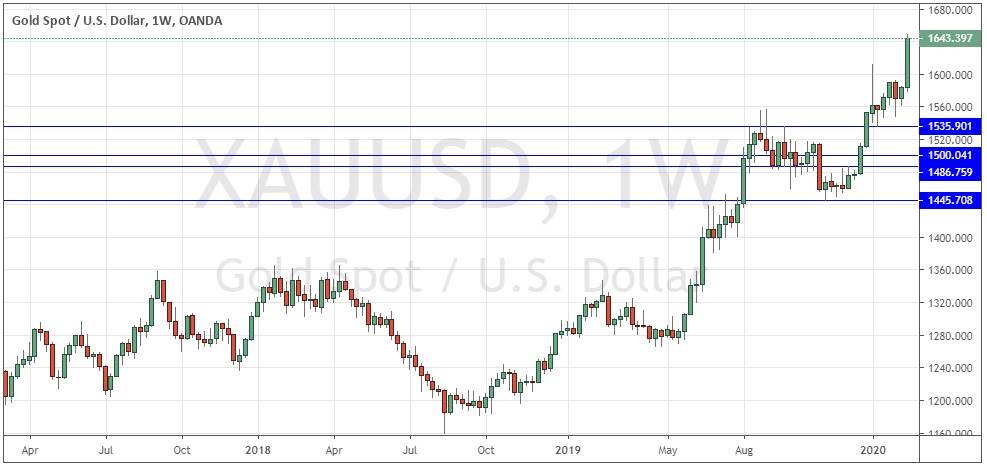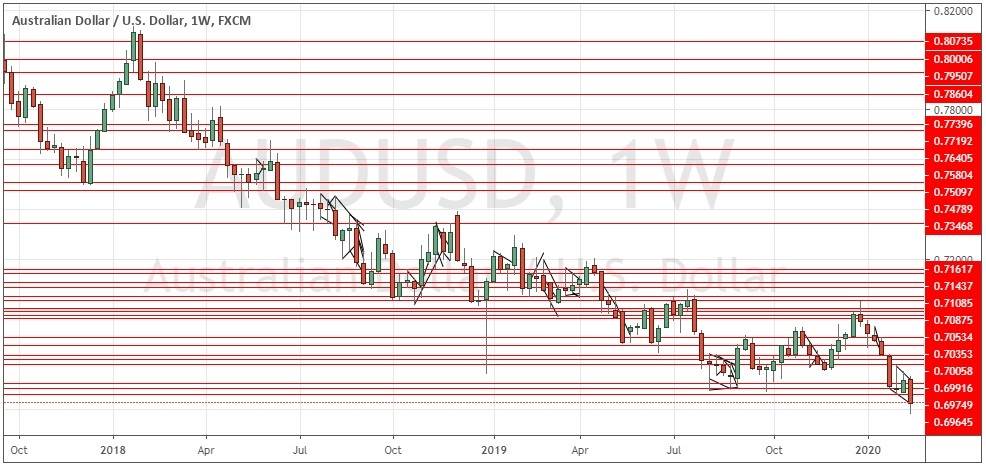The difference between success and failure in Forex trading is very likely to depend upon which currency pairs you choose to trade each week, and not on the exact trading methods you might use to determine trade entries and exits. Each week I am going to analyze fundamentals, sentiment and technical positions in order to determine which currency pairs are most likely to produce the easiest and most profitable trading opportunities over the next week. In some cases, it will be trading the trend. In other cases, it will be trading support and resistance levels during more ranging markets.
Big Picture 23rd February 2020
In my previous piece last week, I forecasted that the best trades were likely to be short of the EUR/USD currency pair and long of the S&P 500 Index. Over the week, EUR/USD rose by 0.17% while the S&P 500 Index fell by 0.93%, so overall these were losing trades with an averaged loss of 0.55%.
Last week’s Forex market saw the strongest rise in the relative value of the Euro, and the strongest fall in the relative value of the Japanese Yen.
Fundamental Analysis & Market Sentiment
Fundamental Analysts are now tending to see less chance of a U.S. rate cut after recent releases of stronger than expected economic data which surprised the market, sending the U.S. Dollar higher almost everywhere. Last week’s FOMC Meeting Minutes also showed the committee continue to see U.S. economic growth as firm and likely to continue.
Sentiment on both the Euro and on the British Pound has soured as it is appearing less likely that the E.U. and the U.K. will be able to agree a positive trade deal by the end of 2020. France’s President Macron has just expressed this view.
The Chinese coronavirus outbreak may have stabilized, with the latest data suggesting that the outbreak has peaked. However, new cases are beginning to be discovered more widely by geography. The Japanese Yen was hit by a sharp fall which may be at least partly driven by concerns that the virus will impact Japan either directly or due to the contagion of economic damage in the Asian region generally. This concern also seems to be hurting the Australian Dollar which is very exposed to the major Asian economies.
Stock markets broadly fell last week, especially the U.S. and German markets which both hit new all-time high prices.
Technical Analysis
U.S. Dollar Index
The weekly price chart below shows last week printed a large bullish engulfing candlestick which closed at a 3-year high. These are bullish signs and support the cast that there is a strong, long-term bullish trend. However, the price did close leaving a relatively large upper wick, which is a sign that bulls should be a little cautious and wait for bullishness to resume on shorter-term time frames. Overall, there is technical evidence that we are likely to see a further upwards move in the U.S. Dollar Index next week.
GOLD
Gold in U.S. Dollar terms just made its highest weekly close in seven years. The weekly candlestick was very large and closed very close to its high. These are all bullish signs, and the price looks likely to rise further over the coming week.
AUD/USD
The AUD/USD currency pair just made its lowest weekly close in eleven years. The weekly candlestick was large and closed within the lower third of its price range. These are all bearish signs, and the price looks likely to fall further over the coming week. However, it could be wise to watch shorter time frames and not be bearish until the price is falling on those time frames as last week ended with a bullish retracement.
Conclusion
This week I forecast the best trade is likely to be long of Gold in AUD terms.




